The .50 BMG (Browning Machine Gun) is a byproduct of the necessities bred of warfare. During World War I, the need for anti-aircraft weaponry, and subsequently anti-materiel, led military officials to pursue a cartridge capable of disabling aircraft over the battlefield. John Browning ultimately developed the venerable M2 “Ma Deuce” machine gun for the .50 BMG in 1921. Incredibly, the Ma Deuce is still in service with US Armed Forces today.
Many modern cartridges have a “parent” cartridge they’re developed from. The .300 Blackout is developed from a trimmed and re-necked 5.56 case. The .270 Winchester originated from the .30-06 while the .308 Winchester is a distance descendant of the .30-06. While one may assume such a massive cartridge like the .50 BMG was developed out of thin air, it wasn’t. The .50 BMG is actually a scaled-up version of the .30-06. Accordingly, the M2 is effectively a larger, beefier version of the Browning M1917 (designed for the .30-06 cartridge).
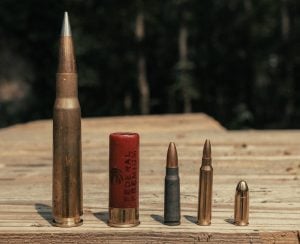
While the .50 BMG’s history spans over a century, America has yet to lose interest in this caliber. Facilitated by its use overseas and in film, the .50 has a cult following that rivals most other calibers. The size, weight, and energy of the cartridge coupled with the size and weight of the associated weapon platform has considerable interest amongst civilians to this day. While not uncovering anything ground-breaking, I felt discussing this impressive and gargantuan cartridge from the perspective of an amateur and proud owner of a .50 BMG was worthwhile.
The Cartridge
The .50 BMG is, simply, the largest cartridge a civilian can own without approval under the National Firearms Act (NFA) of 1934. A rifle with a bore over .50 inches must have an express “sporting purpose.” Large caliber African-game hunting rifles, like the .700 Nitro, are exempt from this regulation. Accordingly, this is why a 20mm anti-aircraft/anti-materiel rifle would require licensing as a destructive device under the NFA. The .50 BMG, as a result of this act, is the largest caliber military cartridge the average civilian can own.
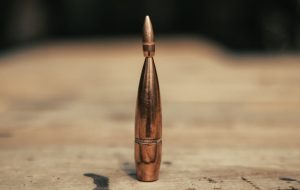
The .50 BMG cartridge measures nearly 5.5” long. For comparison, the average 5.56 cartridge is less than half that length at 2.26”. At the cheap end, .50 BMG costs around $3 per round. Reloading for this hog of a round is dramatically cheaper and can be done at or below $2 per round. I’ve been reloading ammunition for nearly 20 years and was in awe of the staggering difference in the powder charge for the .50 when I first reloaded for it. For instance, a 55-grain .223 powder charge is normally around 25 grains. The .50 has around a 250-grain charge with anywhere between a 647-grain and 750-grain (Hornady A-Max) bullet for most common loadings. Simply, the .223 looks brutally anemic compared to a bullet 12 times its mass.
The .50’s Big Cartridge Energy
The .50 BMG carries approximately 10 times more muzzle energy than the standard 5.56 NATO cartridge. At a whopping 13,000 ft-lb of energy (or more), the .50 is readily capable of delivering a significant amount of kinetic energy to a target — and at distance. For many years, the .50 BMG was the king of long-distance military engagements at or exceeding a mile. As technology and calibers have progressed, the .50 lost its place to calibers with better external ballistics. Cartridges like the .416 Barrett, .408 CheyTac, .338 Lapua Magnum, and numerous others have exhibited far better external ballistics than the .50 BMG.
There are many myths surrounding the energy and ballistics of the .50. The speed and mass of the .50 BMG undoubtedly has more penetration than a .22 Long Rifle. However, others before me have shown the .50 doesn’t magically pass through a car’s engine block and barrel out its trunk like a speed bump in the road. From my experience, the .50 will crack an engine block but, even when using a high explosive incendiary armor-piercing projectile like the Raufoss, is highly unlikely to pass through your grocery-getter’s V6. For this article, I shot an old rotor with an armor-piercing incendiary round. While an impressive sight, the round deviated significantly from its initial trajectory on impact and made a nice dust cloud into the shooting berm behind the rotor.
Since I’ve somewhat burst the bubble on the myth that the .50 can magically pass through anything, it’s worth addressing an additional myth about the .50. Over the years, I’ve heard the .50 produces a massive pressure wave through the air during its flight. The myth normally concludes that a .50 BMG projectile, passing within a foot of an object, can cause significant damage and/or trauma as it flies by.
This myth, while entertaining, doesn’t withstand basic physics. For instance, a 750-grain .50 BMG projectile flying through the air at 2,800 fps generates around 13,000 ft-lb of kinetic energy at the muzzle. Meanwhile, the fastest production car in the world, the SSC Tuatara, travels at a top speed of 415 fps while weighing in at 19.25 million grains. The Tuatara’s energy exceeds seven million ft-lb. The reason these items don’t cause injury as they pass by an object is because (1) their displacement doesn’t cause enough of a pressure wave — like a blast wave — to affect the objects it’s passing by and (2) their aerodynamic nature. Bullets, like supercars, are designed to travel as seamlessly through the air as possible with minimal disturbance around them. Otherwise, the drag would be so profound as to slow down the projectile and/or disrupt its flight. Ultimately, the .50 offers impressive terminal ballistics but is not capable of defying Isaac Newton and his laws.
Shooting the .50
Undoubtedly, the .50 has a significant amount of energy. Energy downrange translates to felt recoil. Most .50 BMG rifles are outfitted with a massive muzzle brake to reduce felt recoil for the shooter. The Barrett M82A1 is outfitted with an iconic muzzle brake that makes this rifle readily identifiable — even to a layman. The rifle used for this article was the “CQB” variant of the M82A1. The CQB, an oxymoronic name for a rifle weighing 31 pounds unloaded, is outfitted with a 20-inch barrel instead of a 29-inch barrel. The muzzle brake, coupled with energy dissipation from the semi-automatic recoil, reduces felt recoil to something comparable to a 12-gauge shotgun.
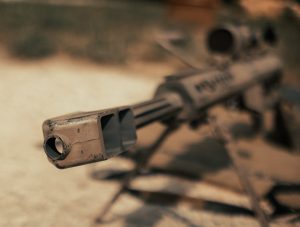
As usual, there’s no free lunch. The muzzle brake on the .50 BMG reduces recoil but redirects the blast from the barrel, especially on shorter barrels, into a spectacular display of gas, dust, and debris. This brake brings about special considerations for any items within several feet of it. During photography for this article, we had to ensure the photographer’s equipment wasn’t damaged by thrown gravel and dust.
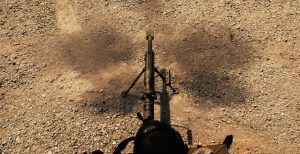
I jokingly ask those shooting the .50 for the first time if they’re congested. I’m often given a quizzical look that is answered not long after the first shot. Conveniently, shooting the .50 BMG has an amazing way of clearing up congestion. While an anecdotal observation, the overpressure from the muzzle blast is better than Mucinex at clearing up a stuffy nose for me. Your results may vary.
The .50 Cal Smile
The first time I got behind a .50, the owner asked for my phone and said he wanted to capture my “50 cal smile”. I shot the first round and grinned ear to ear after pulling the trigger. I’ll never forget the muzzle blast it left in the ground after firing a few shots. The flattened and yellowed grass was awesome yet intimidating.
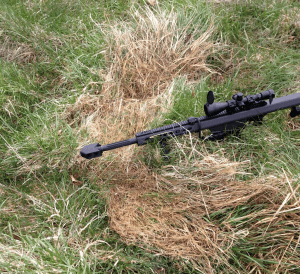
There are few weapons the average civilian can shoot and own that have the awesome power of the .50. With such a weapons platform, it has unique challenges and considerations. Not everyone can afford a Barret M82, M107, or a Lynx. However, there are numerous more “affordable” .50 platforms available like the Barrett 95 or 99, Serbu, or an Armalite AR-50. Nevertheless, if you know someone with a .50 and they offer to let you shoot it, say, “Yes!” I guarantee you will enjoy it. Just make sure they get your smile on camera.


